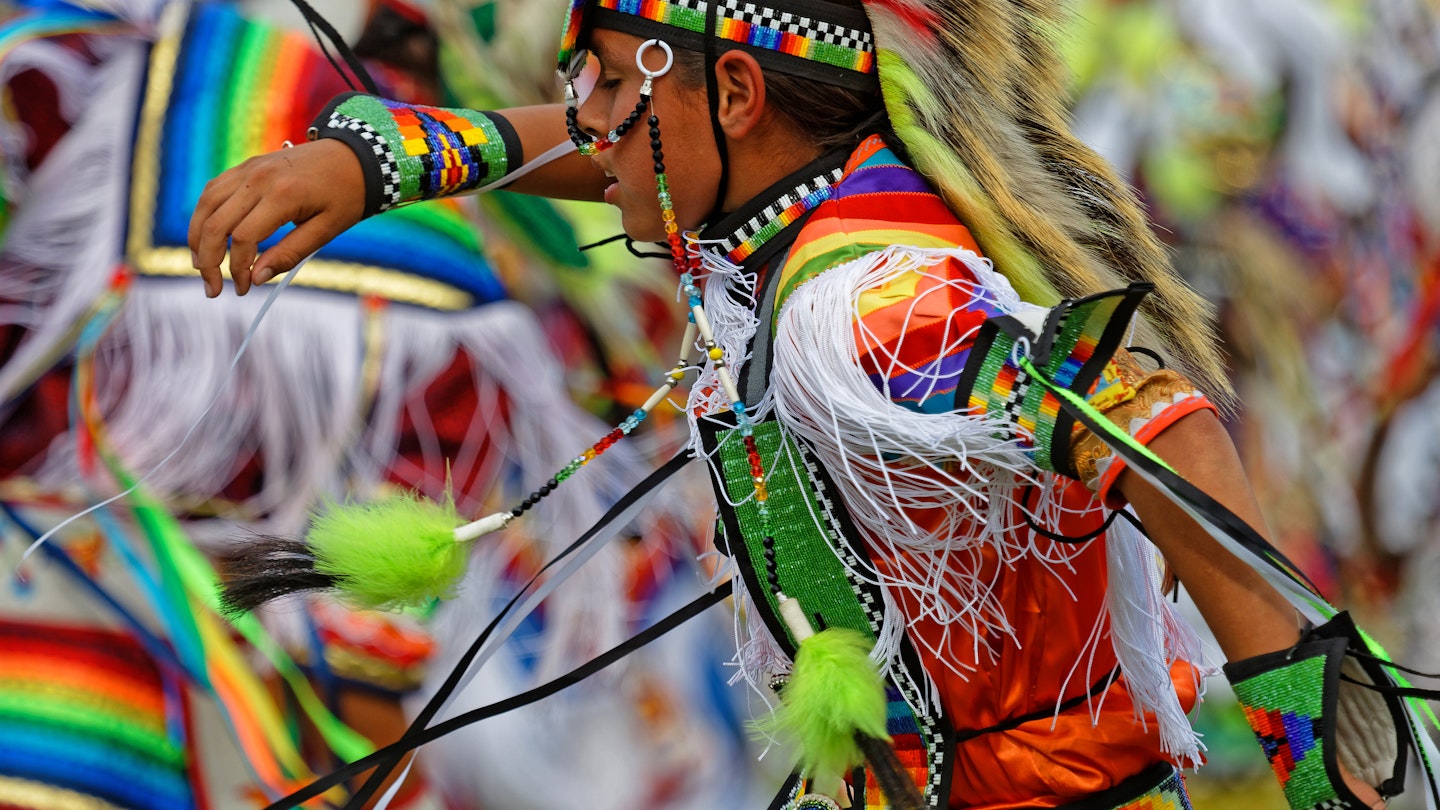Discover Native American Heritage Across the United States
Though textbooks and films like The Last of the Mohicans tend to frame Native American stories in the past tense, a resounding refrain resonates throughout US Indian Country: “We’re still here.”
With more than 560 federally recognized tribes across the United States, Native Americans have deep-rooted connections to every corner of the country. Indigenous communities have endured forced relocations to reservations, yet they continue to thrive and celebrate their heritage. Visitors can engage with Native American culture and traditions in various ways, including visiting Indigenous-owned hotels and resorts as well as cultural centers.
Celebrating Indigenous Peoples’ Day and National Native American Heritage Day
Indigenous Peoples’ Day has gained momentum as an alternative to Columbus Day, while the Friday after American Thanksgiving is recognized as National Native American Heritage Day. Both occasions honor the achievements and contributions of America’s first inhabitants while acknowledging the historical events that led to their genocide and displacement.
Engaging with Native American Culture Year-Round
There are numerous ways to immerse yourself in Native American heritage throughout the year:
- Visit sites managed by the National Park Service, which preserve glimpses of pre-contact life for Indigenous peoples.
- Enjoy museums and cultural institutions that showcase historic and contemporary Native American art, history, and cuisine.
Navajo Nation, Southwest, USA
Navajo Code Talkers famously communicated using the Navajo language during World War II, a language so complex that the Japanese never deciphered their messages. Their remarkable stories come to life in Tuba City, Arizona, at the Explore Navajo Interactive Museum, which also shares the tribe’s spiritual traditions.
Tuba City is located within the Navajo Nation, the largest reservation in the country, covering parts of Arizona, Utah, and New Mexico. This stark high-desert landscape features buttes, mesas, and canyons while concealing a rich, often tragic, history. Respectful visitors should refrain from taking photographs of individuals.
The National Museum of the American Indian in Washington, DC
Visitors can step into a Comanche tipi, savor buffalo chili on fry bread, and delve into the Horse Creek Treaty narrative at this remarkable Smithsonian museum that opened on the National Mall in 2004. The museum’s interactive experiences make tribal traditions and history engaging for audiences of all ages.
The award-winning exhibition “Nation to Nation: Treaties Between the United States and American Indian Nations” spotlights important treaties that shape America’s landholdings. After your visit, consider trying regional native dishes with modern twists at Mitsitam Native Foods Café.
The Heard Museum in Phoenix, Arizona
Renowned for celebrating Native American art and culture, the Heard Museum focuses on tribes of the Southwest. Its arts and crafts exhibits feature pottery, rugs, and a captivating array of Hopi katsina dolls, known as tithu in Hopi.
One of the museum’s most profound exhibits, “Away from Home: American Indian Boarding School Stories,” explores the harrowing impact of federal policies removing Native American children from their homes to assimilate them into mainstream culture.
Mesa Verde National Park, Colorado
Located in the southwestern corner of Colorado, Mesa Verde National Park is a stunning showcase of the Ancestral Puebloans’ cliff dwellings. With a history of continuous occupation from roughly 7500 BCE until 1300 CE, the park offers trails that provide excellent views of this unique landscape.
The Museum of the Cherokee Indian in Cherokee, North Carolina
This informative museum, situated in the lush foothills of the Great Smoky Mountains, shares the compelling history of the Cherokee, who have inhabited the region since the last ice age. Notably, it includes an exhibit recounting the Trail of Tears, a tragic chapter in Native American history.
Chaco Culture National Historic Park, New Mexico
Chaco Culture National Historic Park, one of the largest pre-Columbian historical sites in the United States, is home to massive houses and ceremonial chambers built by the ancestors of today’s Hopi and Pueblo peoples. Though the city was abandoned by 1300 CE due to climate change, it remains a sacred site for the tribes with historical ties to this land.
Santa Fe, New Mexico
For a diverse array of Native American art, Santa Fe is the place to visit. Nestled between 19 Native American pueblos, this historic city is steeped in rich artistic traditions. Beyond the pueblos, visitors can explore a wealth of art galleries and museums dedicated to Native American culture.
The Gilcrease Museum in Tulsa, Oklahoma
The Gilcrease Museum houses an extensive collection of southwestern art, with a focus on Indigenous artists. Founded by oilman and Muscogee Creek Nation member Thomas Gilcrease, the collection spans ancient artifacts to contemporary works. Exhibitions feature pieces by artists like Frank Buffalo Hyde, who combines traditional themes with modern street art techniques.
This article was last updated in October 2023, showcasing the ongoing celebration and recognition of Native American heritage across the United States.





